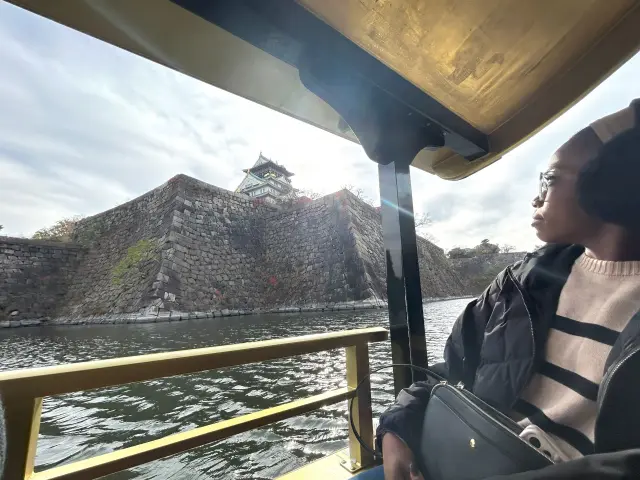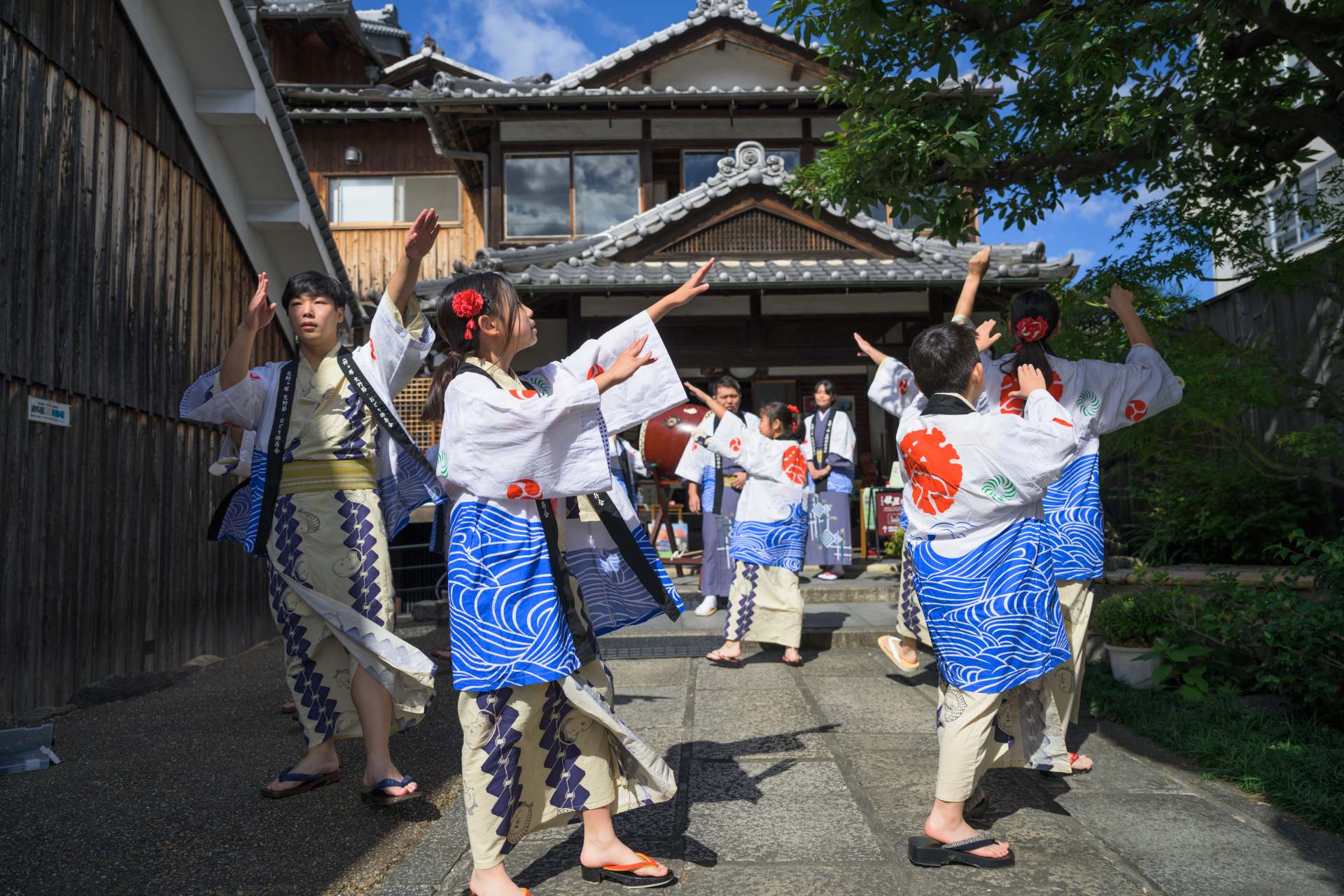
Katanogahara Katanobushi
Last update
Osaka Prefecture Kansai
This traditional dance evolved from the Buddhist invocation dances of the Northern and Southern Courts Period. Loved by the commoners, the Katanogahara Katanobushi has been handed down orally over the generations, and is the origin of the famous Kawachi Ondo Bon Odori dance.
The Katanogahara Katanobushi is a tradition that began as a Buddhist invocation to soothe the souls of those slain in war during the Northern and Southern Courts Period (1337 - 1392), and continues to be carried on to this day. This tradition was born in the Katanogahara hills that straddle the cities of Hirakata and Katano in Osaka Prefecture. Katanogahara is a historic hilly area that prospered as the hunting grounds of the aristocrats during the Heian Period (794 - 1185). The area has deep connections to Tanabata, or the Star Festival, and is where the Heian aristocrats composed poems about the Amano-gawa River flowing through the area as a representation of the Milky Way. Even now, Katano is home to the Hatamono-jinja Shrine dedicated to the legendary Orihime, whereas the Kengyu-ishi Stone representing Hikoboshi, Orihime’s lover can be found in Hirakata.
The tactician’s invocation for officers and troops killed in battle, whether friend or foe, has been carried on across eras, changing into an offering for ancestors and becoming a part of culture rooted in the life of the people.
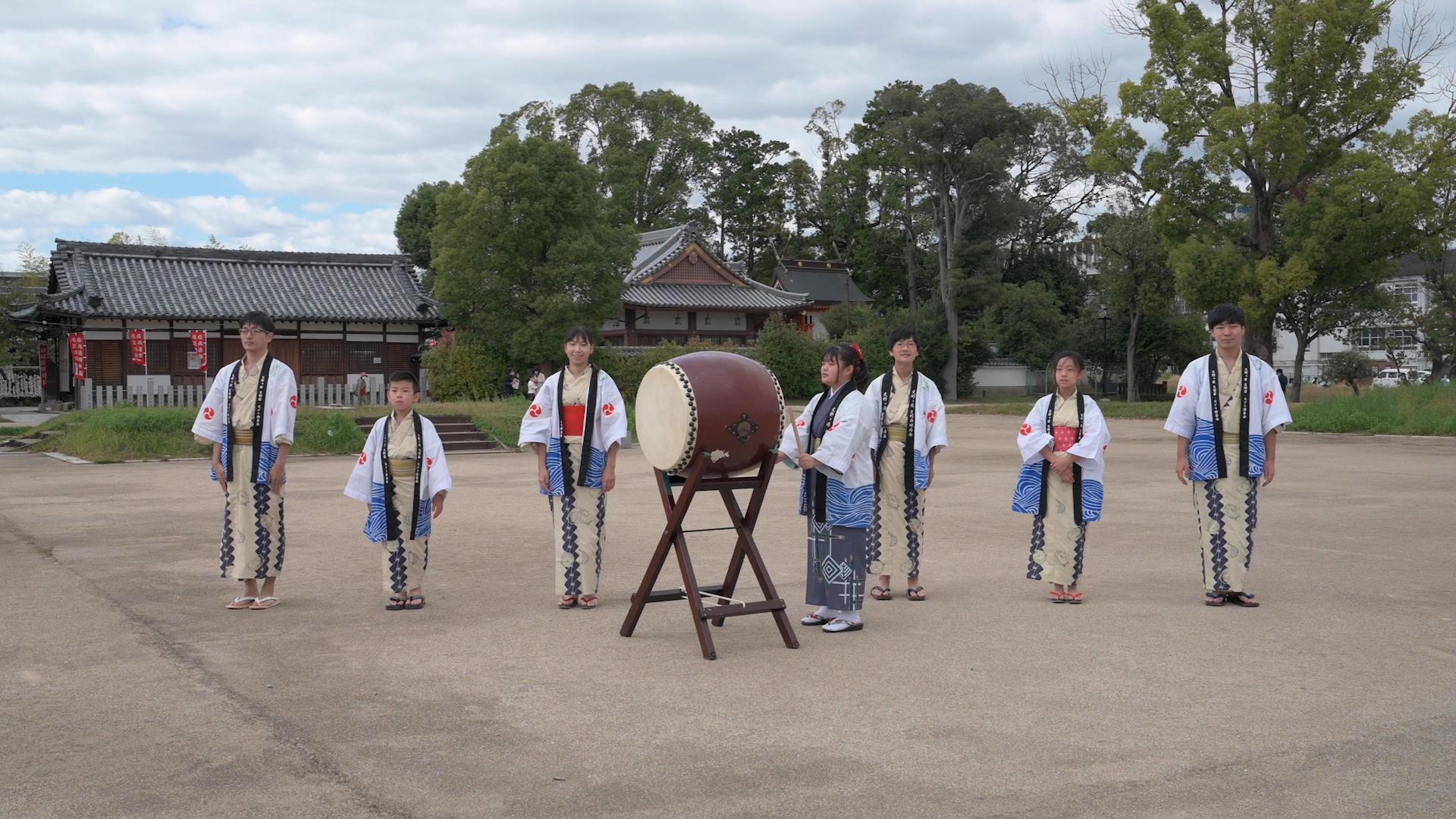
Unlike the Kawachi Ondo, the Katanobushi is unique for its slower singing tempo and dance.
The Katanobushi, performed in the cities of Hirakata and Katano in Osaka Prefecture, follow a repeated pattern of three verses consisting of 7/7 syllables, 7/5 syllables, and 7/5 syllables. After the first verse, a unique rallying cry of “yohohoi-hoi!” is sung, and it is considered the origin of the Kawachi Ondo. The oldest stories about the origins of the Katanobushi go back to the Northern and Southern Courts Period. The story goes that when Kusunoki Masatsura of the Southern Court was defeated during the battle with Ko no Moronao of the Northern Court’s Muromachi shogunate, Kusunoki’s strategist fled to Katano in Kawachi, and performed a Buddhist invocation dance to mourn the officers and soldiers who had fallen in battle. This dance was handed down to the commoners over the generations, being combined with various cultural elements and customs and is thought to have finally evolved into the Bon Odori dance. Legend has it that somewhere around the middle of the Edo Period it transformed into the current Katanobushi.
The Katanobushi was originally called the Kawachi Ondo, however, as it spread across all of Kawachi, other ondo dances also called the Kawachi Ondo overshadowed it, resulting in it becoming called the Katanobushi. Unique Katanobushi dances exist in each village of Katanogahara even today.
A society has arisen to preserve the unchanging Katanobushi and its spirit for future generations, and pass on this cultural tradition that is not found in records.
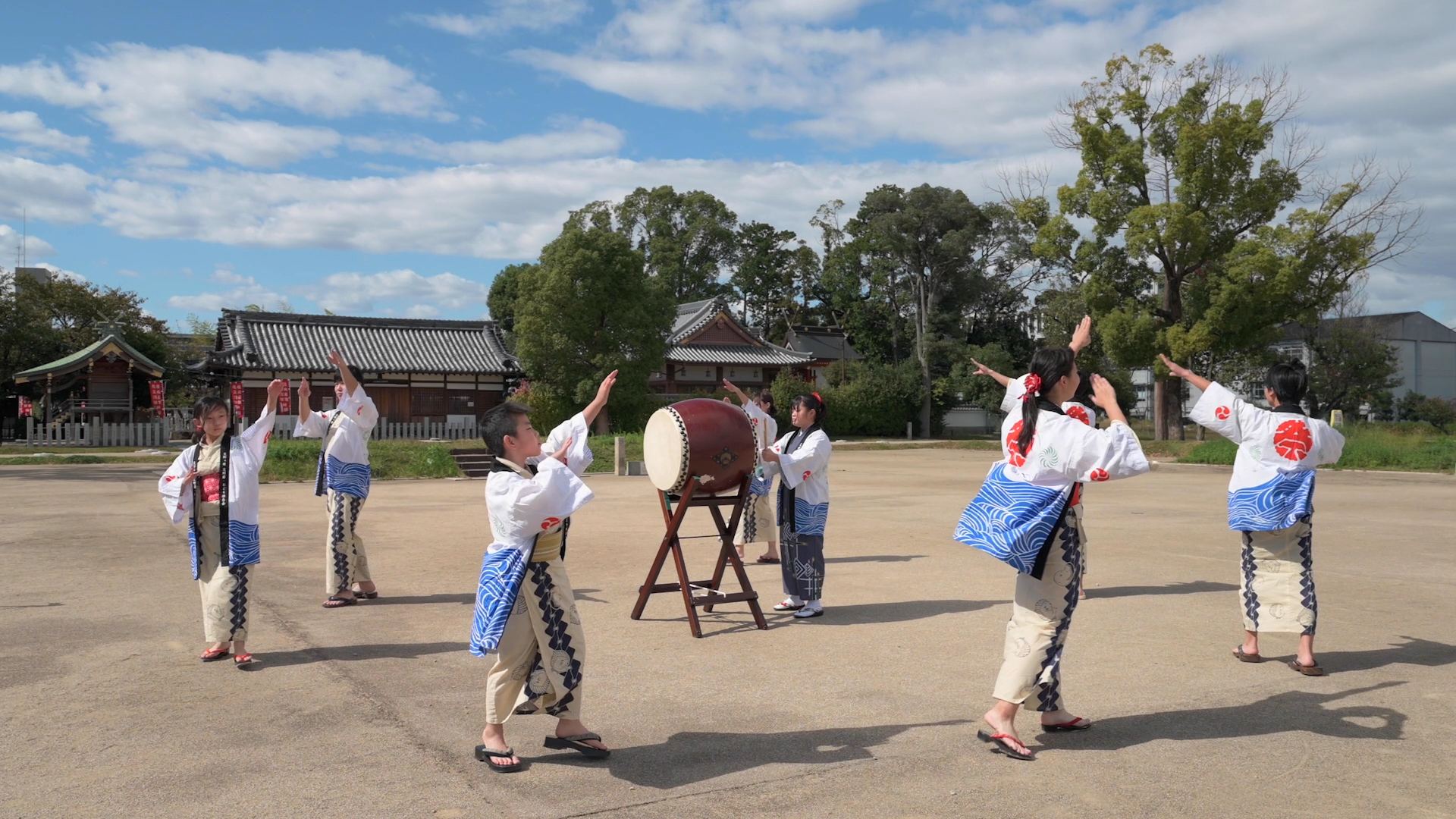
During the Katanobushi held at the Special Historic Site of Kudara-ji Temple, the preservation society sings and dances the Kudara no Konikishishi Monogatari, an original Katanobushi of their own making intended to praise the charms of the local area.
Originally, the Katanobushi was a song that naturally spread among the commoners, and like the Katanobushi Ishikawa Goemon Ichidaiki handed down in Son-enji, Hirakata, many people have turned popular stories into verses that became nursery songs and work songs, resulting in different variations.
Because the Katanobushi is a part of culture that spread through oral tradition as a part of daily life, there are no official records. In order to preserve this unique bit of culture for future generations, the Katanogahara Katanobushi Dance Preservation Society was launched. The society includes members of all ages, from elementary school children to adults, working together not only to hand down the songs and dances of the Katanobushi, but also collaborate with the community in various initiatives such as performing dances during the mid-autumn harvest moon viewing festival held at the Special Historic Site of Kudara-ji Temple in Hirakata. They also perform regularly at the plaza in front of the Hirakata Vie Orner shopping center located at Hirakatashi Station.
The preservation society also works with the city of Hirakata, creating original Katanobushi in exchange for choosing Hirakata as an option for paying taxes to the city. One could say that this flexibility is a unique part of the folk culture that makes the evolving Katanobushi so charming.
Packed with various activities and historic walking spots, Katanogahara is perfect for hiking and for travelers with children.
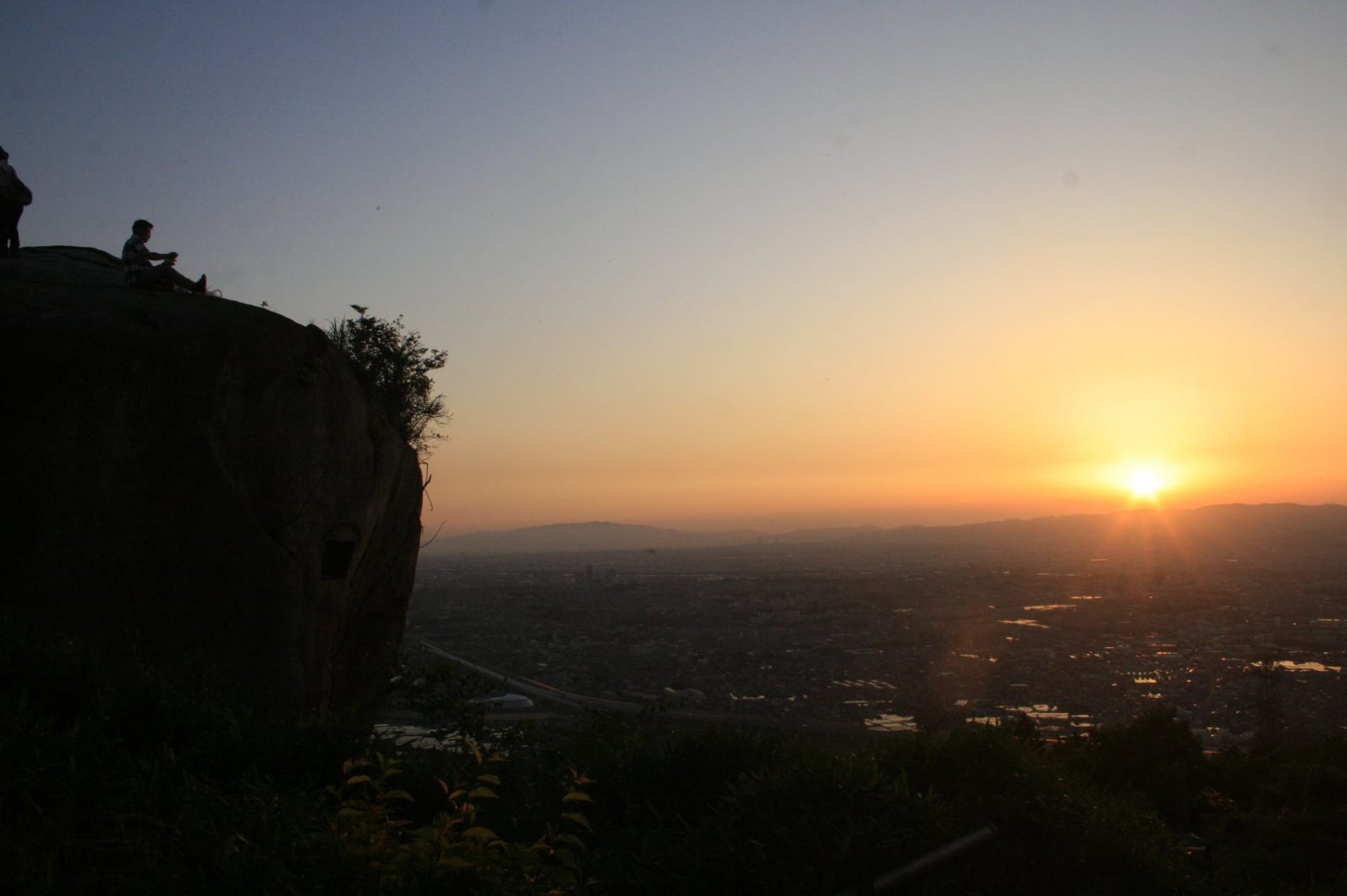
A Sanskrit character carved into the Kannon-iwa Rock on Mt. Konosan by an ancient ascetic monk can still be seen today.
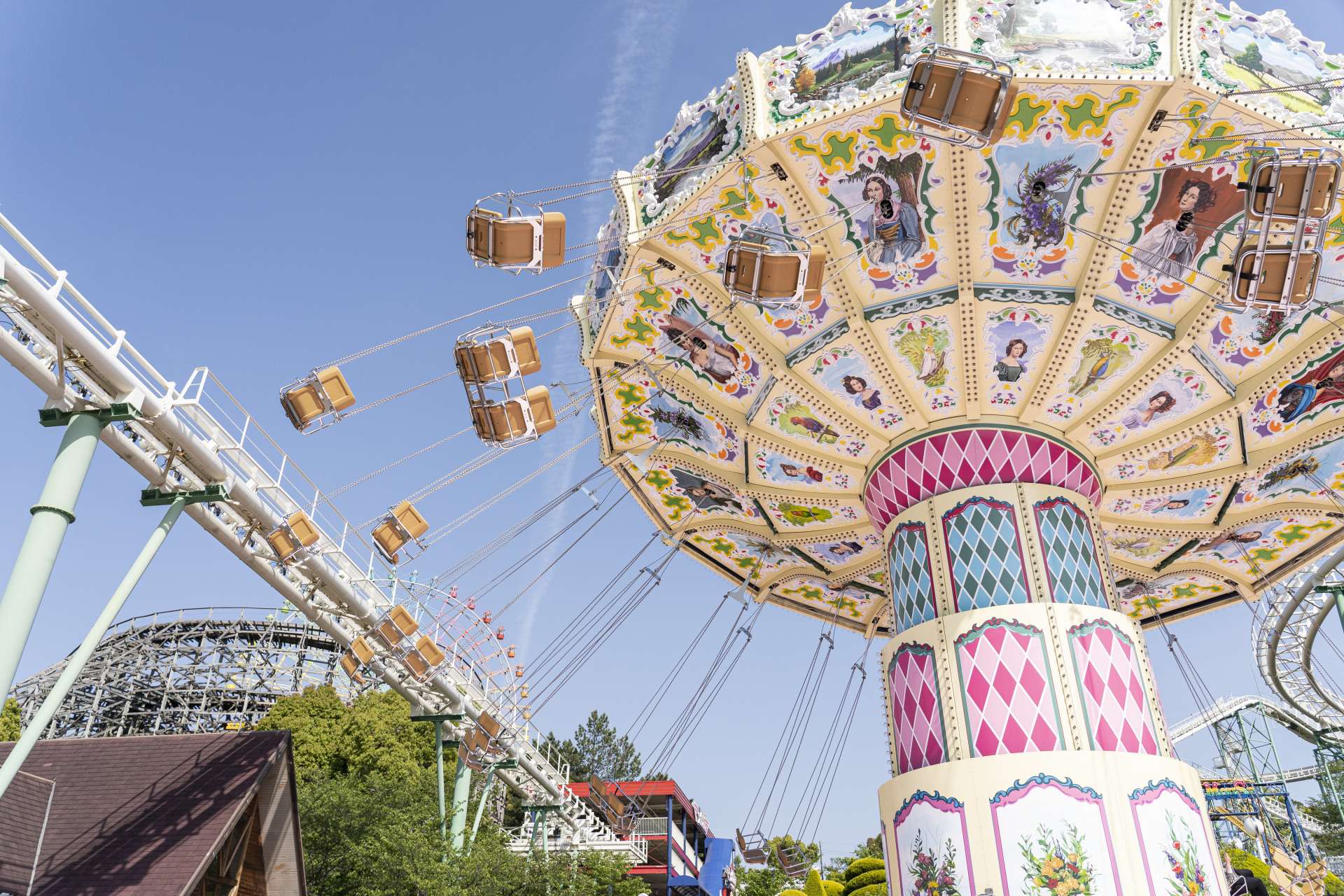
Hirakata Park is the oldest amusement park in Japan, and will celebrate its 110th anniversary in 2022.
In the cities of Hirakata and Katano, which are located on the border of Nara between Osaka and Kyoto, visitors will find many things to do and see including gorgeous scenery, historic buildings, and amusement parks. The Special Historic Site of Kudara-ji Temple where the Katanogahara Katanobushi Dance Preservation Society performed is the site of a former temple located on a low hill in Hirakata, and relics of the temple, such as foundation stones, can still be seen there today. It is thought that Kudara-ji Temple was built as a guardian temple for a clan when Kudara no Konikishi Kyofuku was awarded with the position of director of Kawachi for his role in discovering gold in Mutsu Province for use in painting the Great Buddha of Todai-ji Temple upon its construction in the Nara Period.
Hirakata Park, which will celebrate its 110th anniversary in 2022, is beloved not just locally, but by the entire Kansai region as the oldest amusement park in Japan. In addition to roller coasters and summertime pools, Hirakata Park is famous for its chrysanthemum doll display, which features life-size dolls decorated with chrysanthemums in full bloom, making it a popular autumn event in the Kansai area.
Beautiful scenery can be found among the treasure trove of massive boulders and strange rocks such as Mt. Konosan, the northern peak of the Ikoma mountain range, and the Lion’s Cave in Kisaichi, where it is said that Kobo Daishi secluded himself during ascetic training. Because these spots were training grounds for ascetic monks of the mountain faith long ago, they are popular among many hikers and pilgrims today as a power spot.
Photos: Preservation association of Katanogahara-Katanobushi/Amanogawa, Katanogahara Japan Heritage Project/©Osaka Convention & Tourism Bureau
Check also...

Consider your accommodation in the Kansai area!

Restrictions on Large Baggage

Hidden Stories in Stone: Exploring Japan’s Castle Walls

Feel Like a Lord: Castle with Stunning Panorama Views

Experience the True Essence of Japan through Castles, Cultural Treasures, and Timeless Gardens
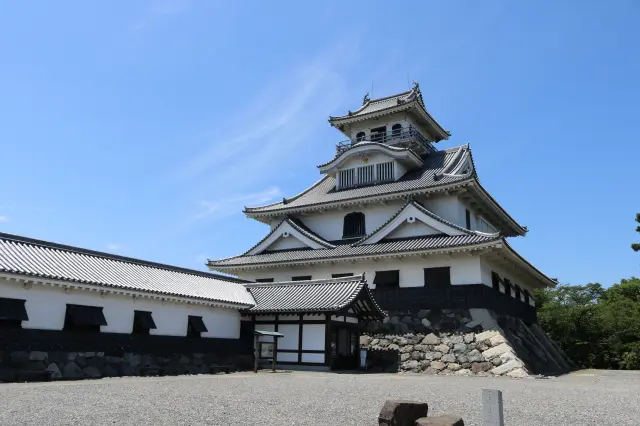
Castles of Toyotomi Hideyoshi
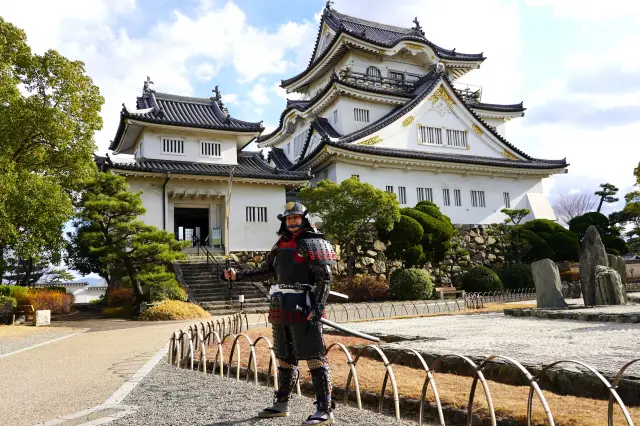
Exploring the Roots of Festivals: A Journey of Understanding Local Bonds and the Preservation of Culture
